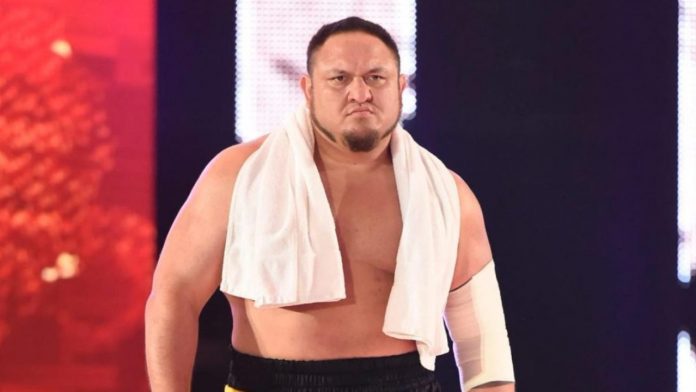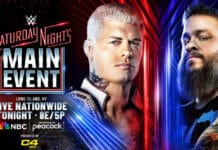
With the way the professional wrestling landscape has been a whirlwind the past few months, as we notice a distinctive shift in the direction of the industry, I’m kept busy with a variety of topics to discuss with this column. I’m very thankful for it, cracking open a late-night energy drink after a Saturday night pay-per-view to get fresh thoughts written down for the review of an event is a much better option than staring at a blank page, pondering what in the wide world of sports might be mildly interesting for readers. I point out this contrast because there was a time when content or a discussion point wasn’t quite as ripe as you will find now. As I’ve mentioned occasionally in these articles, I rarely discuss myself in these write-ups, because you click on this page to read about wrestling, not me. The VHS Memoirs series, a more personal look at some of the events that I usually originally watched on tape, are a mixture of retro reviews and some detail about my fan experience. Truthfully, I was surprised the concept received the positive feedback it did, but that’s why there are currently twenty articles posted online in that series.
However, I will digress a moment to when the static state of the wrestling business didn’t produce nearly as many talking points. Part of the buzz around All Elite Wrestling is the fact that for the first time in two decades, there’s a true alternative to Vince McMahon. Credit deserved to Jeff Jarrett for trying, but the bottom line is, for several reasons that a book could be written about, TNA never reached a level where it could truly be considered opposition to WWE. In short, TNA was the place wrestlers went if WWE didn’t want them. On the flip side, AEW is the place wrestlers go when they don’t want to work for WWE. That’s not meant as a knock on the McMahon empire either, but rather to point out that there’s another organization that has the resources and the philosophy to better utilize the performers that WWE missed the boat on, which is why the existence of AEW benefits everyone in the industry.
More than a decade ago, that wasn’t the case and after TNA failed on their mismanaged attempt to go head-to-head with Raw, it was clear that Vince McMahon still owned professional wrestling in the United States.
While some diehard fans in the “wrestling bubble” can’t see the forest through the trees while they debate star ratings and who is or isn’t buried by a Goldberg squash, there’s an entire other side of the process that is just as important as the action that is eventually presented in the ring.
Obviously, the funding involved is massive and truly the biggest barrier to entry than anything else on an even semi-national scale. There are several insightful shoot interviews from Sean Oliver’s Kayfabe Commentaries that dive into the high-priced contract negotiations of the talent that sparked the industry in the late-90s, but what about the production costs? The money it takes to produce a live weekly wrestling show, getting the ring, the stage, and the entire crew to a different city every week? When Dixie Carter took TNA on the road, those expenses, along with Hulk Hogan using her as a money mark, ultimately took the company to the brink of collapse.
You need the funding, the right philosophy, and the right talent to make a push on a national level.
That’s ultimately why the right pieces fell into the right place organically for Tony Khan to jump start the sports entertainment industry. That’s also why it was such a rare chance for AEW to get off the ground because the organic momentum of The Elite and the buzz from New Japan spontaneously occurred around the same time that the faction’s deals with Ring Of Honor expired so there was the possibility to launch a new company. Regardless of Tony Khan’s aspirations, if Sinclair Broadcasting, a billion dollar corporation, threw $1 million contracts to everyone in The Elite stable in 2018, we wouldn’t be talking about AEW today.
But, as I’ve written before, Sinclair is in the television business, not the wrestling business. The acquisition of ROH as an entity in 2011 saved the company from going under, as it simply couldn’t survive the economics of the industry being independently-owned, but Sinclair didn’t look to purchase a wrestling commodity. The reality of the purchase was that pro wrestling is relatively cheap original programming for Sinclair stations. The original programming gives the corporation a better ad rate across the board.
That actually brings me to the main point of this article, as I finally had a chance to watch some programming for leisure rather than analysis, and decided on Kayfabe Commentates “Gabe’s Book of Secret,” a hypothetical look into the plans that former ROH booker, Gabe Sapolsky before he was dismissed from the promotion in late-2008. I found it very interesting at the level of detail that he put into booking decisions, trying to balance the story-telling process with the reality of the economics of the business model.
I always thought that Gabe was in a no-win situation during this era of the business. In some ways, similar to ECW a few years before it, Ring of Honor was too small to be big and too big to be small. The original ROH provided a stage for some of the best talent in the world to make a name for themselves, and there was a period of a few years during its original run where the argument could’ve definitely been made that Ring of Honor had the best wrestling in the world. The problem was that once the talent made a name for themselves on that ROH platform, the company wasn’t big enough to keep them or compete with the money offered from national organizations. I understand why TNA allowed their talent to work for indy groups, including ROH, but in some ways, the two overlapped, taking away the promotional efforts of TNA. When Dixie Carter finally made talent exclusive, taking them away from ROH, Gabe was tasked with attempting to replace many of the top stars in the company all at once.
Going back to business models and economics, it was interesting to hear Gabe talk about the DVD model in the Kayfabe Commentates production. On the surface, it made sense and a few years prior, it worked, as internet hype translated to DVD sales so that fans could witness the bouts they read live reports about. As ROH tried to expand its territory with more shows to try to generate more revenue, the combination of the economic downturn in the United States in early-2008 and the fact that fans couldn’t keep up with DVD releases, they business model more or less fizzled out. This time period was to a point where physical media was too expensive to produce for a promotion at the level of ROH and technology wasn’t to the point where it is now for cheaper streaming distribution. I specifically remember checking the very basic ROH website at the time and there were sales of “Buy 3 Get 1 Free” for DVDs, which was a way for customers to buy multiple events at once, but the bottom line was, that would’ve cost fans $60 on wrestling DVDs and at the time of an economic crunch, it was a tough sell.
It makes you wonder what would’ve happened if those stellar ROH shows from 2004-2007 had a bigger audience and wider distribution? Would names like Samoa Joe, Homicide, Nigel, and others have become bigger stars in their prime? Would TNA of continued if it didn’t have the funnel of talent from ROH? How would any of that have altered the path the industry reached today?
The point being that in the past, some great talent didn’t get the chance they truly deserved because the pieces of the puzzle just weren’t in the right place at the right time. You can’t book or plan when different aspects of the business organically create the opportunity to shift the business. The biggest takeaway from all of this is that the next few years should be very interesting with the competition from AEW and the direction of the industry.
What do you think? Comment below with your thoughts, opinions, feedback and anything else that was raised.
Until next week
-Jim LaMotta
E mail [email protected] | You can follow me on Twitter @jimlamotta







